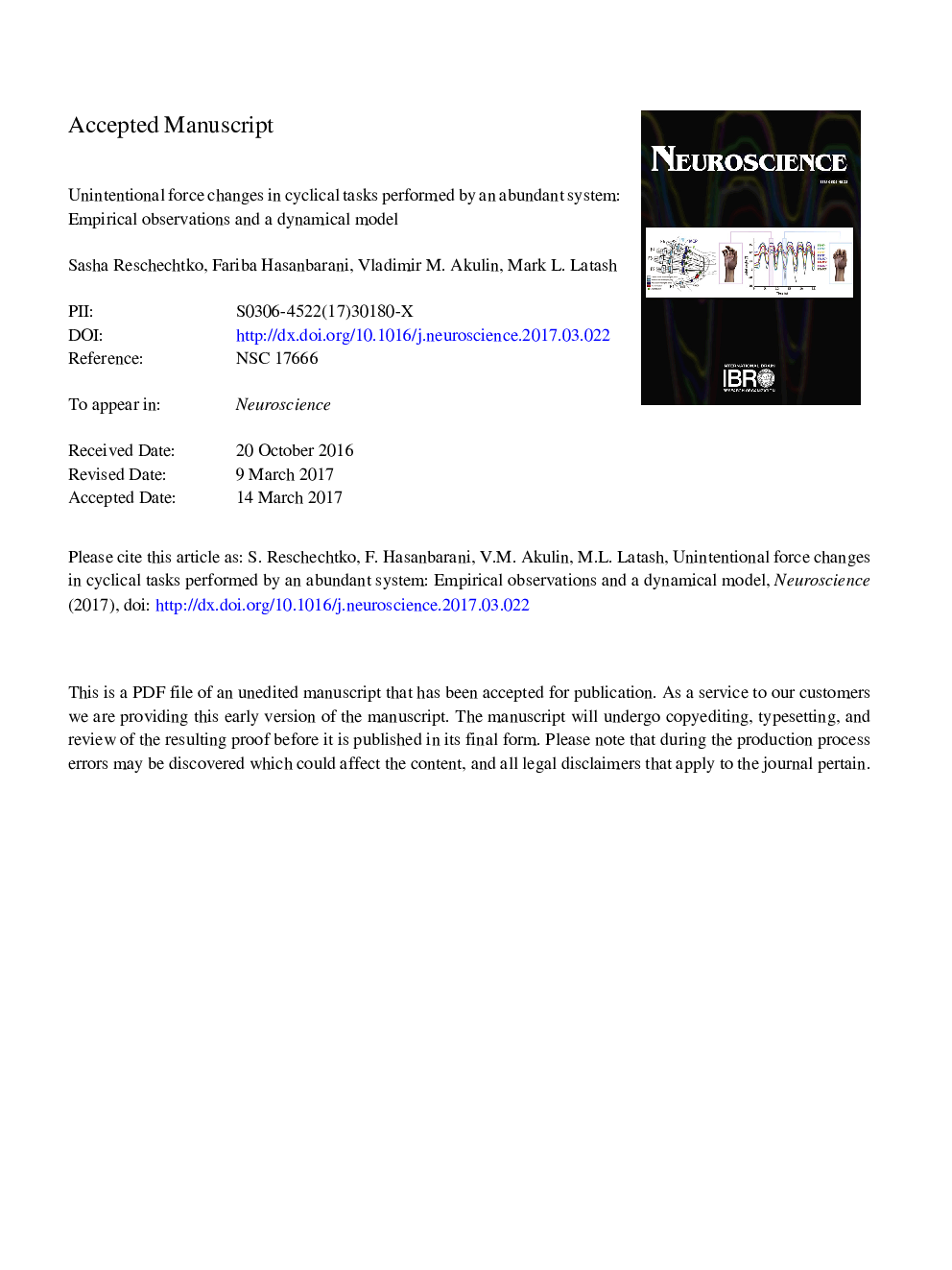| Article ID | Journal | Published Year | Pages | File Type |
|---|---|---|---|---|
| 5737690 | Neuroscience | 2017 | 48 Pages |
Abstract
The study explored unintentional force changes elicited by removing visual feedback during cyclical, two-finger isometric force production tasks. Subjects performed two types of tasks at 1Â Hz, paced by an auditory metronome. One - Force task - required cyclical changes in total force while maintaining the sharing, defined as relative contribution of a finger to total force. The other task - Share task - required cyclical changes in sharing while keeping total force unchanged. Each trial started under full visual feedback on both force and sharing; subsequently, feedback on the variable that was instructed to stay constant was frozen, and finally feedback on the other variable was also removed. In both tasks, turning off visual feedback on total force elicited a drop in the mid-point of the force cycle and an increase in the peak-to-peak force amplitude. Turning off visual feedback on sharing led to a drift of mean share toward 50:50 across both tasks. Without visual feedback there was consistent deviation of the two force time series from the in-phase pattern (typical of the Force task) and from the out-of-phase pattern (typical of the Share task). This finding is in contrast to most earlier studies that demonstrated only two stable patterns, in-phase and out-of-phase. We interpret the results as consequences of drifts of parameters in a dynamical system leading in particular to drifts in the referent finger coordinates toward their actual coordinates. The relative phase desynchronization is caused by the right-left differences in the hypothesized drift processes, consistent with the dynamic dominance hypothesis.
Related Topics
Life Sciences
Neuroscience
Neuroscience (General)
Authors
Sasha Reschechtko, Fariba Hasanbarani, Vladimir M. Akulin, Mark L. Latash,
